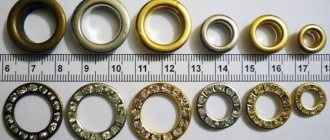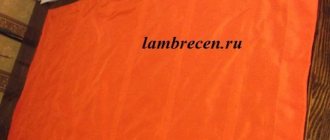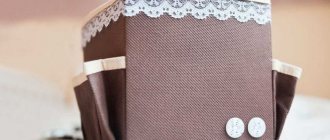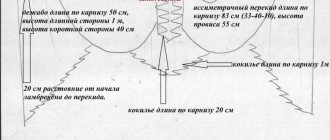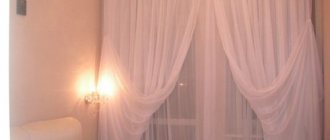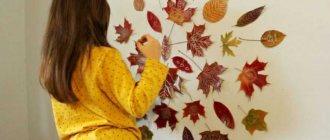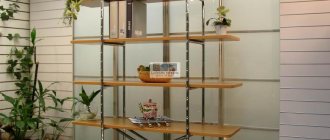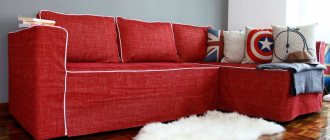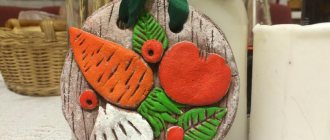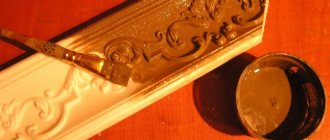The interior of an apartment is a complete organism in which every element plays an important role. The window, the appearance is not in the last place here; the decor includes fabric and various variations. Beautiful curtains, unlike blinds, add a cozy atmosphere to the room and make the apartment warm.
Beautiful curtains in the interior
It is better to decorate windows with classic decor, using curtains with drapery - then they will be lush and recognizable. Bow folds on curtains can be made in different styles and types. Just always take into account that the presence of tape implies the possibility of the curtain tearing under strong tension, because at the seam the fabric becomes somewhat thinner.
When they want to make a curtain themselves, the first thing they do is buy even scraps of fabric. This does not mean at all that you can’t make beautiful folds on the curtains yourself. This is not such a difficult task that you should outsource the work to a professional and pay a lot of money for it. The advantage of working independently is that you can always correct the points you don’t like, try them on the window and see what the result is. Today we will figure out how to make folds on curtains ourselves, what is required for this, and so on.
How to make folds on a curtain?
Assembling a curtain with your own hands can be done in two ways:
- using a special braid;
- manually.
A distinctive feature of the first method is its simplicity and high speed. To form soft waves it is enough:
- purchase curtain tape with the required assembly factor from a specialized store;
- attach the braid, pull the threads located on it;
- straighten the bends carefully;
- tie the ends of the threads.
The result is smooth, uniform assemblies. Disadvantages of this method:
- it is not suitable for decorating dense fabrics;
- the threads may fray over time, and the braid will have to be replaced;
- Using tape you cannot make curly large folds.
More expressive options are obtained manually, but this process is labor-intensive. Also here you will have to make a preliminary calculation of the size, number of folds and, if necessary, the distance between them.
Marking folds on fabric and assembling bow elements
Before you begin assembling pleated curtains, you need to mark the entire width of the fabric with chalk or soap. On light fabric you can use a simple pencil. A separate mathematical calculation is made for each type of fold. You can speed up this procedure using a special online calculator, which will give you the exact dimensions in a matter of seconds. Here is an example of how to calculate a bow fold.
Fixing the edges of the folds
When all the parameters have been calculated and the markings are applied to the fabric, you can begin assembling the bows. It is very important that all edges of the folds are securely fixed with thread or pins; this is the only way to prevent them from moving during the stitching process. Sewing curtains with bow pleats takes a little more time than other types of products, but the end result is worth it.
Despite the simplicity of the work, accuracy must be present, because with the slightest shift of the fabric or crease of the edge, the shape of the bow element is disrupted, which means the curtain will lose its attractiveness.
Draping textiles with bow elements is a common method used to decorate a window opening. Curtains, lambrequins and folds, equipped with folds, look attractive and stylish and fit harmoniously into the interior of any room.
Types of folds
Most often, when making curtains or lambrequins with your own hands, you get three fold options:
- one-sided - the fabric is laid evenly or at intervals in one direction in even waves;
- bow - are one-sided folds directed in different directions, the finished structure looks like a flat bow;
- counter - the opposite of bow ones, in them, on the front side, the folds of the fabric are directed towards each other.
Important
It will be interesting to look at a curtain in which one-sided folds go towards the center towards each other, and the central gather is counter.
Application in the interior of premises
Curtains with drapery of various types are used to decorate a variety of rooms. The choice of fold type depends on the type of fabric chosen and its density.
Kitchen
In the kitchen it is common to use less dense curtains. Preference is given to thin, easily draped fabrics.
Living room
Living rooms are a special category of premises. In such places it is customary to place curtains with lambrequins. It is popular to use different types of tucks to decorate the same fabric, with tassels and fringes as additional decoration.
Bedroom
In this case, dense materials are used that can create the necessary twilight in the room to ensure a restful sleep. When decorating a room, curtains should be in harmony with the surrounding interior.
Children's
To decorate children's rooms, window curtains with bright patterns are often chosen. When draping such fabrics, the location of the pattern should be taken into account. You cannot choose massive, heavy types of folds.
What calculations are needed?
Before carrying out the calculation, it will be necessary to measure the length of the cornice and decide on the method of processing the side edges. The depth of assembly depends on the density of the fabric and the size of the window (the smaller, the narrower the parts should be made). Experts advise taking the depth of the part within 14-20 cm.
Unilateral
An example of calculating such a model for a cornice 1.2 m or 120 cm long. The width of each finished part is 10 cm.
You can calculate the required footage using the formula:
cornice length * coefficient + seam allowances
1.2 * 3 + 0.03 = 3.63 m = 363 cm.
If one piece of fabric is missing, then when stitching you need to make sure that the seam gets as close as possible to the inner fold line.
Bow
Bow pleats on curtains come with or without gaps. Any part consists of an external assembly width (a) and two internal widths (c).
Solid models
An example of calculating a continuous assembly (without gaps) for the above cornice. For this option, the coefficient is 3. Therefore, the fabric footage is determined as in the previous case.
Calculation of the number of bows:
cornice length / fold width
120/10 = 12.
Option with gaps
If you have chosen a fairly dense fabric for sewing a window curtain with your own hands or you need to save material, use bow folds with intervals of different sizes. The gathering coefficient depends on the ratio of the width of the fold (a) and the gap (b):
- a = b – the coefficient is assumed to be 2;
- b = ½ a - the coefficient will be equal to 2.5.
An example of calculation for the previously selected cornice with a coefficient of 2. The distance between the individual parts and the width of the fold is taken to be 8 cm.
- Let's calculate the fabric footage:
cornice length * coefficient + seam allowances
1.2 * 2 + 0.03 = 2.43 m = 243 cm.
If you have little experience in sewing with your own hands and doubts arise, it is better to add 15-20 cm in case of errors when laying the gathers.
The number of bows is:
cornice length /(a+b)
120/(8+8) = 7,5
Round to the nearest whole number – 8.
- Specify the size of the assembly and the gap:
a+b = 120/8 = 15 cm.
Therefore, the width of the fold and the gap between the individual parts are 7.5 cm.
After this, you can start decorating the fabric.
LiveInternetLiveInternet
—Categories
-Music
—Search by diary
—Subscription by e-mail
— Regular readers
—Communities
-Statistics
Let me make a reservation right away: this method is suitable if you first put hooks on the curtains, and only then hang them on the curtain rod.
Ceiling cornices are ideal in this case. We calculate the amount of material for this method of hanging curtains. We take the coefficient 1.5 plus 10 cm for the technical folds of the curtains (we want them to hang beautifully) plus 4 cm for hems of the side sections.
Let's say the width of the cornice is 3m. We need to sew 2 curtains. 3x1.5=4.5m. We turn each curtain on the sides (technical folds) by 10 cm, this is another 0.4 m. And four side seams - plus 16cm. In total we get 4.5 + 0.4 + 0.16 = 5.06 m. You can round it up to five meters exactly.
Why are technical tricks needed? You can, of course, do without them, but I personally prefer it when the side seams are not visible, especially since sometimes the side seam cannot be ironed properly (such fabrics do occur).
Let's move on to practice. We retreat 10cm from the side edge of the curtain and hang a hook - this will be the outermost hook.
We put the next hook on the loop (closer to the collar) and use it to thread the second loop through five centimeters. It turned out to be a small fold.
Next, we place hooks along the entire width of the curtain in the same way, the distance between the hooks is 10cm, and between the loops on one hook - 5cm.
Don't forget about the technical fold on the other side of the curtain.
The result was these uniform shallow folds across the entire width of the curtain. This is exactly how the curtain will hang when the window is curtained.
When the curtains are pulled apart, they will also hang in even folds, only the folds will be deeper.
If something is not clear, ask in the comments, I will answer all your questions.
Did you like the master class? I would be very grateful if you share this article with your friends on social networks by clicking on any button below.
If you would like to share your experience with the readers of the site or simply show your work, I invite you to cooperate .
Best regards, Oksana Fadeeva.
Source
How to lay one-sided models?
Laying one-sided assemblies is not very difficult. To do this you should:
- mark the fold and alignment lines, setting aside segments equal to the width of the fold (10 cm in the example);
- lay the first piece - take the fabric at the level of the third mark and pull it to the first, pin it together (line 2 will be inside the fold);
- move the fourth and pin at the level of the second and so on until the end of the material;
- after forming all the assemblies, they should be secured with machine stitching;
- treat the top with curtain tape, having previously pulled out the strings from it, or with decorative braid.
Main advantages, photo of pleated curtains
1. Various control options: manual and remote. 2. Incredibly easy to care for: they can be washed in warm water up to 40 ⁰C. 3. The versatility of pleated curtains - they are suitable for the most unusual windows (triangular, round, arched). 4. They are resistant to ultraviolet radiation. 5. They contain a unique feature, which is the combination of two fabrics according to the “Day-Night” type.
Curtain designs that can be purchased from us:
They are very much reminiscent of blinds in their design, but the thin rim and special fabric still make them stand out significantly and allow you to create a special atmosphere in the room, moving away from the usual office style. The basis of the structure is a frame with metal crossbars, between which fabric is stretched. Such a simple solution in the design of these curtains allows not only to easily adjust them, but also to maintain a long service life. The prices for pleated curtains are quite reasonable, so anyone can buy them.
Our store offers curtains with different fold widths; usually a 25 mm fold is ordered for standard types of windows. At the same time, they have restrictions on width and height; usually for a 50 mm fold the maximum width is up to 4.5 m, and the height is up to 4.6 m.
Features of pleated curtain fabrics
Unlike ordinary blinds, pleated curtains can be made from fabrics of any color. They can be either dark or translucent, plain or with a beautiful and original pattern. Mother-of-pearl curtain fabrics can be combined with drapes, creating an unusual interior design. As a rule, the main material for pleated curtains is polyester; they can also be treated with special substances that resemble an antistatic agent in composition. As a result, the paints retain their bright color, and dust does not settle on them.
Application of curtains
In connection with the emergence of original buildings, where each room is fundamentally different from one another, designers are faced with the difficult task of designing a modern interior, where everything will be designed in the same style. Unusually shaped windows can be decorated in different ways, but for non-standard sizes, pleated curtains for indoor use and awnings on windows for external use are perfect. They are universal, can serve as an addition to the main interior and at the same time perform an important function - protection from bright sunlight. They can be mounted on cornices that will match the color with the overall design; they can also be easily installed on non-standard window openings.
We offer you pleated curtains for windows at competitive prices. From us you can get high-quality service and place an order for the design of a winter garden. Today our curtains are the best decoration for your home or apartment.
How to create bow folds?
In bow versions, the fold lines are located at the back. The central part (bow) is located on the face of the curtain, and the folds are connected on the wrong side.
When marking bow pleats, it is important to always start with a value of c. In the future, this distance is not laid down, but is wrapped on the opposite side. Next, you should make the markings according to the calculation (for continuous ones, 10 cm, for the option with intervals, 7.5 cm each). For greater convenience in the latter case, it is better to mark the gaps with colored chalk or a felt-tip pen.
After applying the markings, you can begin decorating. For solid model:
- lay the first bow - move the fabric at the level of the first mark to the beginning of the fabric, and align mark 2 with 3 and pin it. In this case, the fold lines should meet in the center of the bow. After this, the extreme bend can be released;
- second bow - combine mark 4 with 3, and 6 with 5. Pin both folds;
- continue until the end of the fabric;
- stitch and finish the top.
For the spaced option, the first bow is formed as described above. For the second bow: combine mark 5 with 4, and pull 7 to 6. Pin and similarly form the remaining bows and process the top of the curtain.
Sewing curtain tape
To sew the braid to the curtain you will need the following tools:
- Sewing machine;
- Tape measure;
- Chalk;
- Scissors;
- Iron.
By the way, folds on curtains can be formed without braid. In industrial conditions, a special folding foot is used for this, but such a device is not cheap, and there is no point in buying it for one-time use at home.
Sewing is performed in the following sequence:
- We process the upper cut of the curtain fabric - tuck it inward by 5-10 centimeters (depending on the thickness of the braid) and secure it with two longitudinal stitches;
- Iron the folded fabric along the entire length of the curtain;
- We lay out the braid on the curtain and turn its outer sides 2 centimeters inward. It should be located at a distance of at least 1 cm from the top cut of the canvas, and 5 cm from its sides;
- We sew the braid to the fabric - we make a longitudinal stitch on the upper and lower contours, and a stitch near each internal tightening rope.
- Now you need to tuck and stitch the edges of the curtain, which we left on the sides of the tape. The main thing is to first release the tightening threads so that you don’t have to cut the fabric later.
All that remains is to iron the fabric at the sewing site and you can start tightening.
Conclusion
DIY assemblies can be done using curtain tape or by hand. The first method is simple and does not require much effort. The second is more labor-intensive, but you can create beautiful, stylish folds.
Typically, curtains have one-sided, counter or bow options with or without gaps. The calculation and sequence of actions to create the necessary composition depends on this.
How to properly attach eyelets for curtains?
How to sew curtain tape and get a beautiful drapery?
How to make wooden blinds with your own hands?
Ready-made curtains or made to order
Usually, after such lines, massive arguments from the interested parties are given. But if objectively, then... The price will be in favor of ready-made curtains. This is the result of flow production, which makes the product cheaper. Of the minuses:
Standard options for cornice sizes, which is inconvenient if your window is not standard.
Typical fabric size by height. Which, again, is inconvenient for non-standard window sizes or options for playing with dabbing.
Limited colors, prints, textures.
Accessories and tunings, such as a visor, are not provided or must be completed independently.
If the listed disadvantages are not significant for you, and the price is important, then the ready-made option will suit you. Ready-made Roman blinds are sold in construction hypermarkets, specialized stores, and online stores.
Tailoring to order is the production of curtains according to the customer’s wishes and the exact parameters of the room. The pinnacle of tailoring to order - designer curtains . But this definition needs to be understood in more detail...
Manual laying option
Hand-folded tulle requires certain sewing skills, since it mainly consists of thin fabrics that are very slippery and capricious to work with.
The fabric slips and moves in different directions, therefore, if possible, such work should be given to a specialist, and if you still decide to try your hand at the work, follow a few rules.
All sewing lines should follow in the same direction, this will help you avoid skewing the fabric.
Tulle can be folded with different fillings of the fabric. The basis for the calculation is the distance along the cornice. For example, let’s take the distance along the cornice equal to three meters.
Ideally, there should be three times more fabric to place tulle on the fold, that is, 9 meters.
The principle of laying can be seen here.
But it’s not always possible to purchase 9 meters. Sometimes you already have fabric with a spacing of less than 1:3, for example 6 meters.
Double filling of tulle involves the arrangement of folds, in which the fold goes through a certain distance, it looks like: fold, distance, fold, distance.
Such tulle folds already need to be calculated.
